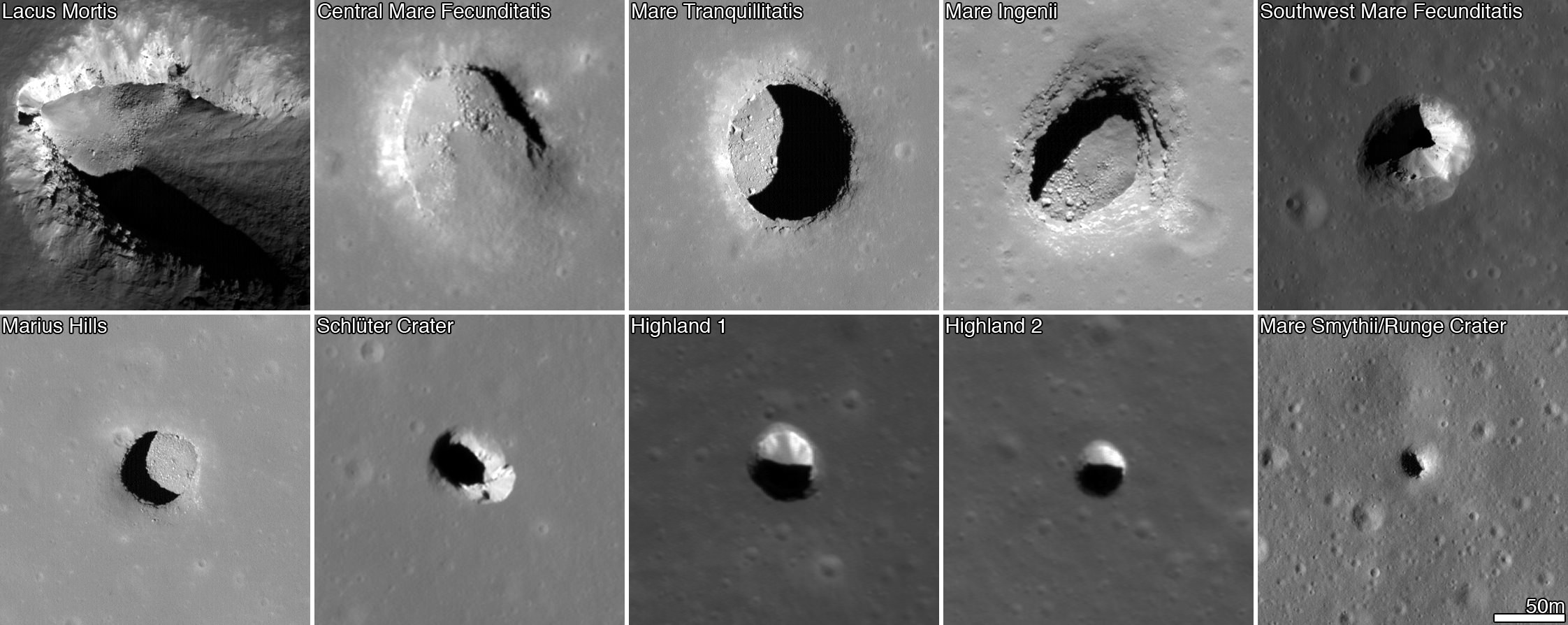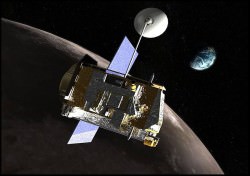Craters are a familiar sight on the lunar surface and indeed on many of the rocky planets in the Solar System. There are other circular features that are picked up on images from orbiters but these pits are thought to be the collapsed roofs of lava tubes. A team of researchers have mapped one of these tubes using radar reflection and created the first 3D map of the tube’s entrance. Places like these could make ideal places to setup research stations, protected from the harsh environment of an alien world.
Continue reading “The Entrance of a Lunar Lava Tube Mapped from Space”How Humanity’s Next Moon Explorers Could Live In Lunar ‘Pits’

Just look at that new video from NASA showing the first moon landing site in three dimensions. It’s tempting to touch on the surface nearby the Eagle lander there in the center and do some prospecting.
You’ll notice a lot of craters in that video, which is based on Lunar Reconnaissance Orbiter data. Across the moon’s surface, a separate study saw the spacecraft investigate 200 extremely steep-walled craters, known as “pits”.
These would be fascinating places to send astronauts for scientific study. Not only that, they’re actually one of the safest spots possible on the moon, according to a new study.
“Pits would be useful in a support role for human activity on the lunar surface,” stated lead researcher Robert Wagner of Arizona State University.
“A habitat placed in a pit — ideally several dozen meters back under an overhang — would provide a very safe location for astronauts: no radiation, no micrometeorites, possibly very little dust, and no wild day-night temperature swings.”
And if you look at the picture below, you can see at least one of those pits is in the Sea of Tranquility — the approximate landing area where Apollo 11 touched down 45 years ago this week. The pits were found mainly using a computer algorithm that scanned LRO photos, although a few of the craters were previously identified with the Japanese Kaguya spacecraft.
Large craters or lunar “seas” (ancient, solidified lava flows) are the locations where most of these pits are found. How they were formed is being investigated, but there are some hypotheses. Perhaps a meteorite impact caused a collapse, or perhaps molten rock flows under the surface gradually lost their lava, leaving voids.

To learn more, the researchers say more LRO images would be great (only 40% of the surface imaged had the appropriate lighting conditions for this study) and in the future, we’d need to get much closer-up than pictures taken from orbit.
“The ideal follow-up, of course, would be to drop probes into one or two of these pits, and get a really good look at what’s down there,” added Wagner.
“Pits, by their nature, cannot be explored very well from orbit — the lower walls and any floor-level caves simply cannot be seen from a good angle. Even a few pictures from ground-level would answer a lot of the outstanding questions about the nature of the voids that the pits collapsed into. We’re currently in the very early design phases of a mission concept to do exactly this, exploring one of the largest mare pits.”
You can read more about the research in the journal Icarus.
Source: NASA

